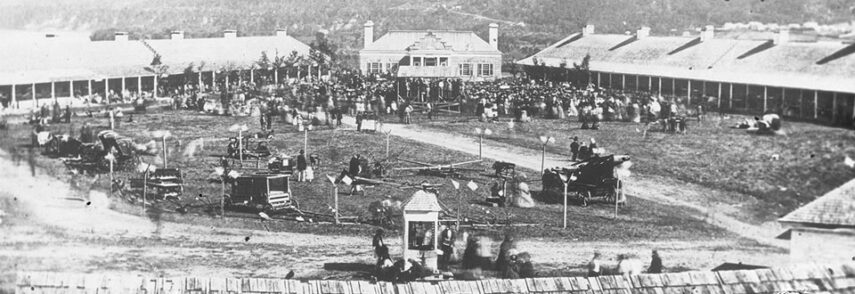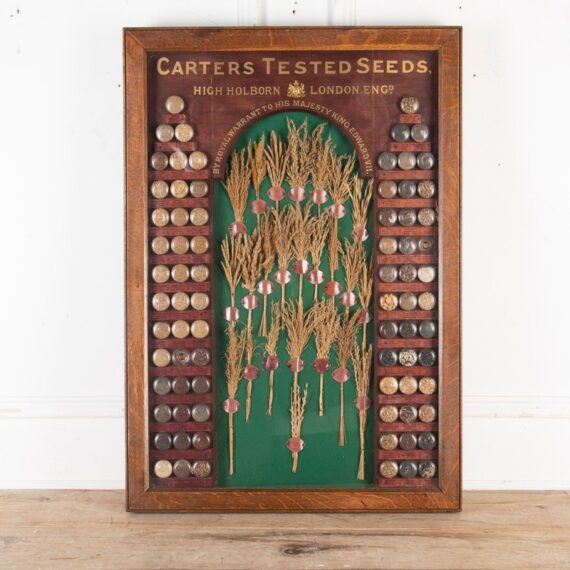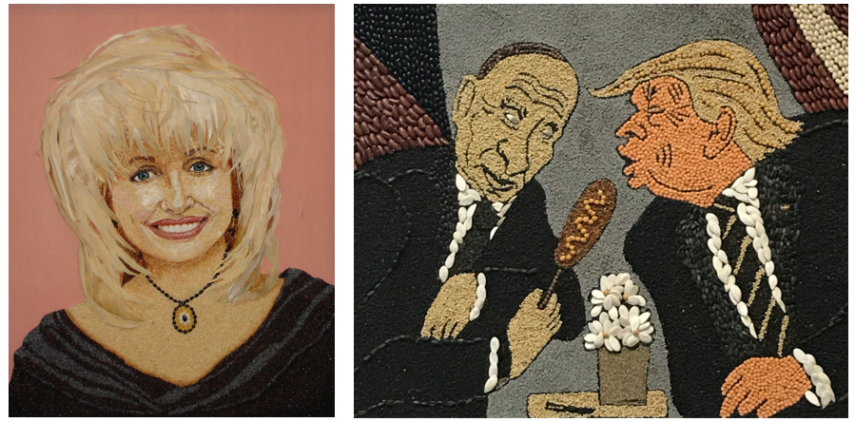
From Prize Crops to Political Satire: The Story of Seed Art
By Rob Bedeaux
September 3, 2025—If you wandered through an agricultural fair a hundred years ago, you might have seen something remarkable: a farmer proudly standing beside a panel made entirely of seeds. Neatly arranged in geometric patterns or decorative swirls, these seed displays were more than just pretty—they were a way to show off the quality of a harvest and the skill of the farmer.
Fast forward to today, and those same seeds might form a cheeky portrait of a politician, a pop star, or a viral internet meme. The journey of seed art from agricultural pride to cultural commentary tells a story as rich as the crops themselves.
Agricultural Pride and Heritage

1860: State Fair held at Fort Snelling
In the late 1800s and early 1900s, farming was an identity, it was community, and it was pride. Agricultural fairs across Minnesota and the Midwest gave farmers the chance to showcase their blue-ribbon livestock, vegetables, and grains. One way they did this was by creating award-winning “seed panels.” Farmers glued seeds onto boards, creating intricate designs that highlighted the quality of their crops. These “brag boards” were a way for farmers to promote their products and labor.
The Birth of a Folk Tradition
Over time, seed panels became more than agricultural bragging rights—they morphed into a folk art form. Instead of single grains displayed in patterns highlighting the farmer’s harvest, the seeds started becoming the “brag” themselves.
Unlike fine art materials, seeds were accessible to everyone, and the medium rewarded patience, creativity, and a steady hand. As the skill level increased and creativity blossomed, fairs began to recognize and formalize competitions, particularly at the Minnesota State Fair, where seed art eventually developed into a must-see stop in the Agriculture Building.

Nineteenth-century Carter Tested seed wall display
Like other crafts such as quilting or wood carving, seed art began to blur the line between usefulness and artistic expression. While works reflected the maker’s connection to the land, they also provided a platform for individuality and storytelling.
From Decoration to Commentary
In 1965, the Minnesota Certified Seed Show was a huge competition where Minnesota Crop Improvement Association (MCIA) members entered hundreds of seed samples. Then-superintendent Orris Shulstad wanted to raise awareness about crops grown in the state and attract the increasing number of people not associated with agriculture.

Certified seed display at the Minnesota State Fair
Shulstad, along with his sister Jean (a classically trained oil painter), envisioned a competition where artists used seeds and crop plant parts to fashion works of art. So, that year, they convinced the Minnesota State Fair to include Crop Art as a competition category. Its goal was simple: help Minnesotans, especially those in the cities and suburbs, tell a corncob from a soybean pod.
By the end of that decade, seed art had begun to change. Early entries focused on symmetrical patterns or floral designs, with the highlight being the seed varietal on display. Now, artists were experimenting with portraits, landscapes, and humor, using different seeds to add detail and nuance to the pieces. With enough time and vision, thousands of tiny seeds could be transformed into recognizable faces or complex scenes.
Seed art was becoming more than just decoration; it was becoming a platform for artistic expression. Political satire, celebrity culture, and social commentary entered the mix. Fairgoers could admire a farmer’s harvest one moment and laugh at a sharp, seed-covered critique of current events the next.
Seed Art Today
Today, seed art is one of the most popular attractions at the Minnesota State Fair. Visitors line up to see what clever creations artists have dreamed up, often sparking conversations about politics, pop culture, and the news of the day. Works range from affectionate tributes like the Dolly Parton portrait from 2007 to the biting political caricatures of Donald Trump and Vladimir Putin in 2017.

Left: Seed art, Dolly Parton, August 25, 2007. Right: Seed art, September 4, 2017 (photos by Rob Bedeaux).
In today’s always-on media-soaked world, seed art has found a broader audience. Social media amplifies its reach, with photos of intricate works spreading far beyond Minnesota. Museums and galleries now recognize seed art as part of the country’s rich folk tradition, showcasing it alongside other forms of vernacular creativity.
Whether arranged into a portrait of a pop star or a sharp political cartoon, seed art reminds us that even the smallest seeds can carry big stories.
Seed Art at Mia
Don’t miss your chance to see the “Best in Show” crop art, hand-selected by Mia’s judges at the 2025 Minnesota State Fair. “Cream of the Crop: A Minnesota Folk Art Showcase” is on view from September 6 to September 28, 2025. This exhibition features 10 pieces displayed at Mia for a limited time, alongside our other cultural masterpieces.
